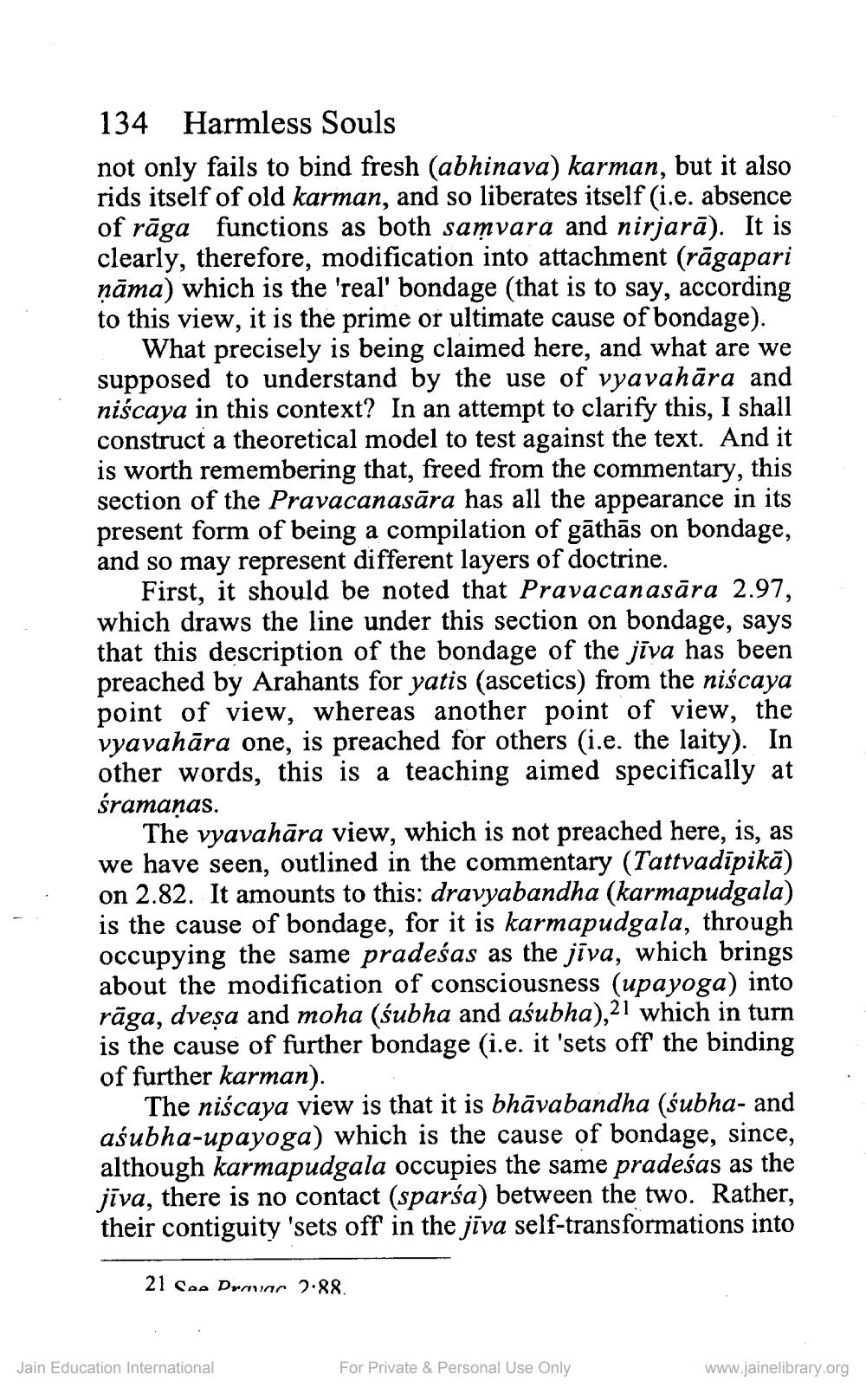________________
134
Harmless Souls
not only fails to bind fresh (abhinava) karman, but it also rids itself of old karman, and so liberates itself (i.e. absence of rāga functions as both samvara and nirjarā). It is clearly, therefore, modification into attachment (rāgapari ṇāma) which is the 'real' bondage (that is to say, according to this view, it is the prime or ultimate cause of bondage).
What precisely is being claimed here, and what are we supposed to understand by the use of vyavahāra and niscaya in this context? In an attempt to clarify this, I shall construct a theoretical model to test against the text. And it is worth remembering that, freed from the commentary, this section of the Pravacanasara has all the appearance in its present form of being a compilation of gāthās on bondage, and so may represent different layers of doctrine.
First, it should be noted that Pravacanasāra 2.97, which draws the line under this section on bondage, says that this description of the bondage of the jiva has been preached by Arahants for yatis (ascetics) from the niscaya point of view, whereas another point of view, the vyavahāra one, is preached for others (i.e. the laity). In other words, this is a teaching aimed specifically at śramaņas.
The vyavahāra view, which is not preached here, is, as we have seen, outlined in the commentary (Tattvadīpikā) on 2.82. It amounts to this: dravyabandha (karmapudgala) is the cause of bondage, for it is karmapudgala, through occupying the same pradeśas as the jiva, which brings about the modification of consciousness (upayoga) into raga, dveṣa and moha (subha and aśubha),21 which in turn is the cause of further bondage (i.e. it 'sets off the binding of further karman).
The niscaya view is that it is bhāvabandha (subha- and asubha-upayoga) which is the cause of bondage, since, although karmapudgala occupies the same pradeśas as the jīva, there is no contact (sparśa) between the two. Rather, their contiguity 'sets off' in the jiva self-transformations into
21 See Pravac 2·88.
Jain Education International
For Private & Personal Use Only
www.jainelibrary.org




